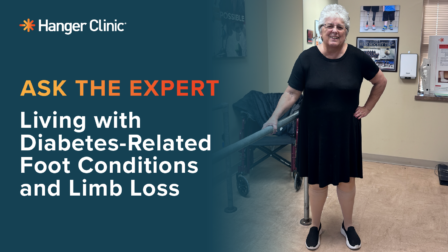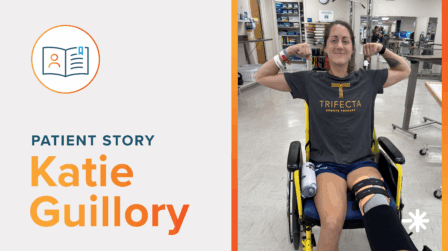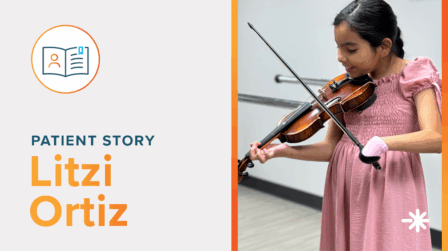10 Common Questions Before Starting the Cranial Helmet Journey
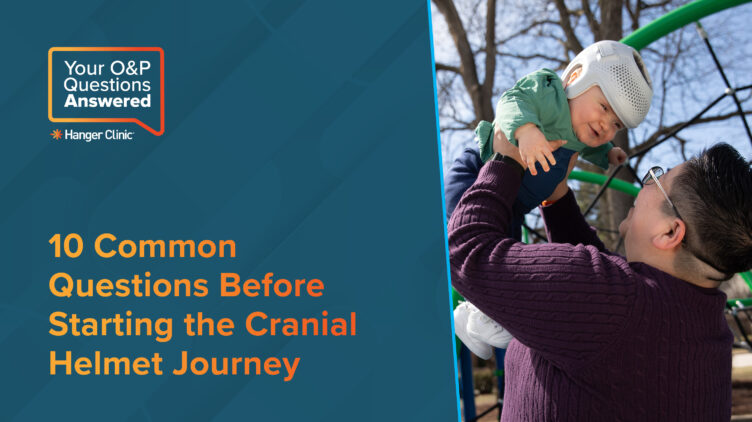
Recognizing that your baby has an irregular head shape can be alarming, and the thought of treating him or her with a cranial remolding orthosis (or “cranial helmet”) can feel even more overwhelming. At Hanger Clinic, our Cranial Asymmetry Remolding Experts are here to help put your mind at ease by providing you with the expertise, education, and support you need to feel comfortable and confident about the journey ahead.
We sat down with Jennifer Mascarro, mom to Jaxon who wears a cranial helmet, to hear her top questions before treatment. Inspired by her experience and many others, we’ve compiled 10 of the most common questions and concerns parents share—along with answers to help you feel more confident as you begin the cranial helmet journey.
1. Is my baby in pain or uncomfortable wearing the cranial helmet?
The cranial helmet is custom-made to improve your baby’s head shape as they grow. Most babies adjust quickly and don’t seem bothered by it—many even forget it’s there after a few days.
2. Did I do something that caused my baby to have an irregular head shape?
Head shape differences are common and often result from natural factors like sleeping position, birth conditions, or tight womb space. You’re taking a proactive step to assess your baby’s head shape for a cranial remolding orthosis – and that’s something to be proud of.
3. Will this affect my baby’s development?
No—cranial helmets do not interfere with brain development or milestones.
4. How long will my baby need to wear the helmet?
Treatment length varies, but most babies wear the helmet for about 3–4 months. Your orthotist will monitor progress closely and adjust the plan as needed to ensure the best outcome.
Tummy Time Tips and Positioning Strategies
Tummy time and proper positioning are important for your baby’s healthy development. We’ve gathered specific techniques in our Tummy Time and Corrective Positioning Techniques guide to help you keep your baby better positioned throughout the day.
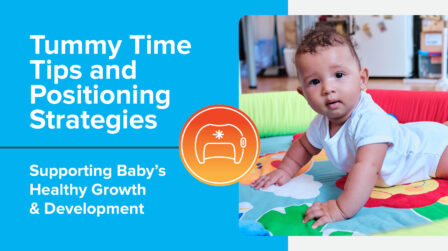
5. Will my baby be able to sleep, play, and interact like other babies of the same age?
Yes. Babies can sleep, play, and cuddle just like other children of the same age. The helmet becomes part of their routine and most adapt quickly. You’ll still enjoy all those special moments—just with a little extra gear.
6. Will people stare or ask questions?
It’s natural to worry about that, but many parents find that the helmet becomes a conversation starter—and a chance to educate others. Some even decorate the helmet to reflect their baby’s personality, turning it into a badge of strength and progress.
7. What if my baby does not like the helmet?
Adjusting to your baby’s cranial helmet treatment can feel overwhelming. Be patient with yourself and your baby as you adapt to this new routine. Some babies fuss at first, but most adjust within a few days. Your orthotist will help with tips to ease the transition and support you every step of the way.
Jennifer shared, “One thing I wish I knew before starting the cranial helmet journey was that babies will get used to the helmet, so they won’t always be upset and crying all the time. That was one of our biggest fears.”
8. Is a cranial helmet really necessary?
Cranial helmets are recommended when natural growth alone isn’t likely to correct your baby’s head shape—and when early methods like tummy time and repositioning haven’t been effective. In these cases, early cranial helmet treatment may offer the most effective path toward improved head shape and symmetry.
At Hanger Clinic, our goal is always to provide the best treatment for your child’s unique needs. We offer a variety of FDA-regulated helmet options to fit your family’s preferences, including lightweight 3D-printed designs and traditional thermoplastic helmets—each designed to support different treatment goals and diagnoses.
9. Can I talk to other parents who have gone through the cranial helmet journey with their child?
Yes—and we encourage it! Connecting with other families can be incredibly reassuring. Many parents find comfort in hearing real stories, sharing tips, and celebrating progress together. Your orthotist is a valuable asset to help connect you with others who have previously walked this path.
Jennifer shared, “What helped us is reaching out to other parents who have been through the journey and just consistency with making sure your baby is wearing the helmet as they should be.”
10. Who can I trust to help me and my baby during our cranial helmet journey?
To help families find expert care for babies with plagiocephaly (“flat head syndrome”) and similar conditions, Hanger Clinic has built the nation’s largest network of Cranial Asymmetry Remolding Experts—known as the CARE Network. With more than 200 certified orthotists specializing in cranial remolding, CARE Network clinicians bring extensive experience and compassion to every appointment. With over 260 clinics nationwide, it’s easy to find a trusted specialist close to home.
Our specialists will apply their deep, holistic understanding of pediatric anatomy and take into account natural developmental milestones when treating your baby. We embrace transparent, evidence-based care, utilize pressure-free treatment recommendations, and recommend clinically-appropriate technology designed to fit each baby’s unique needs and help them achieve the best possible outcomes.
Next Steps
When it comes to your child’s growth, every step forward matters. Starting cranial helmet therapy may feel like a big step, but it’s one taken with love, care, and expert guidance. The Hanger Clinic CARE Network is here to answer questions, offer support, and celebrate every milestone with you.
Request a Free Evaluation
Want an expert opinion as to whether your child will benefit from a cranial helmet? Schedule a free evaluation with a specialist in Hanger Clinic’s CARE Network.
Latest Updates
Subscribe to stay up-to-date on our latest posts.
